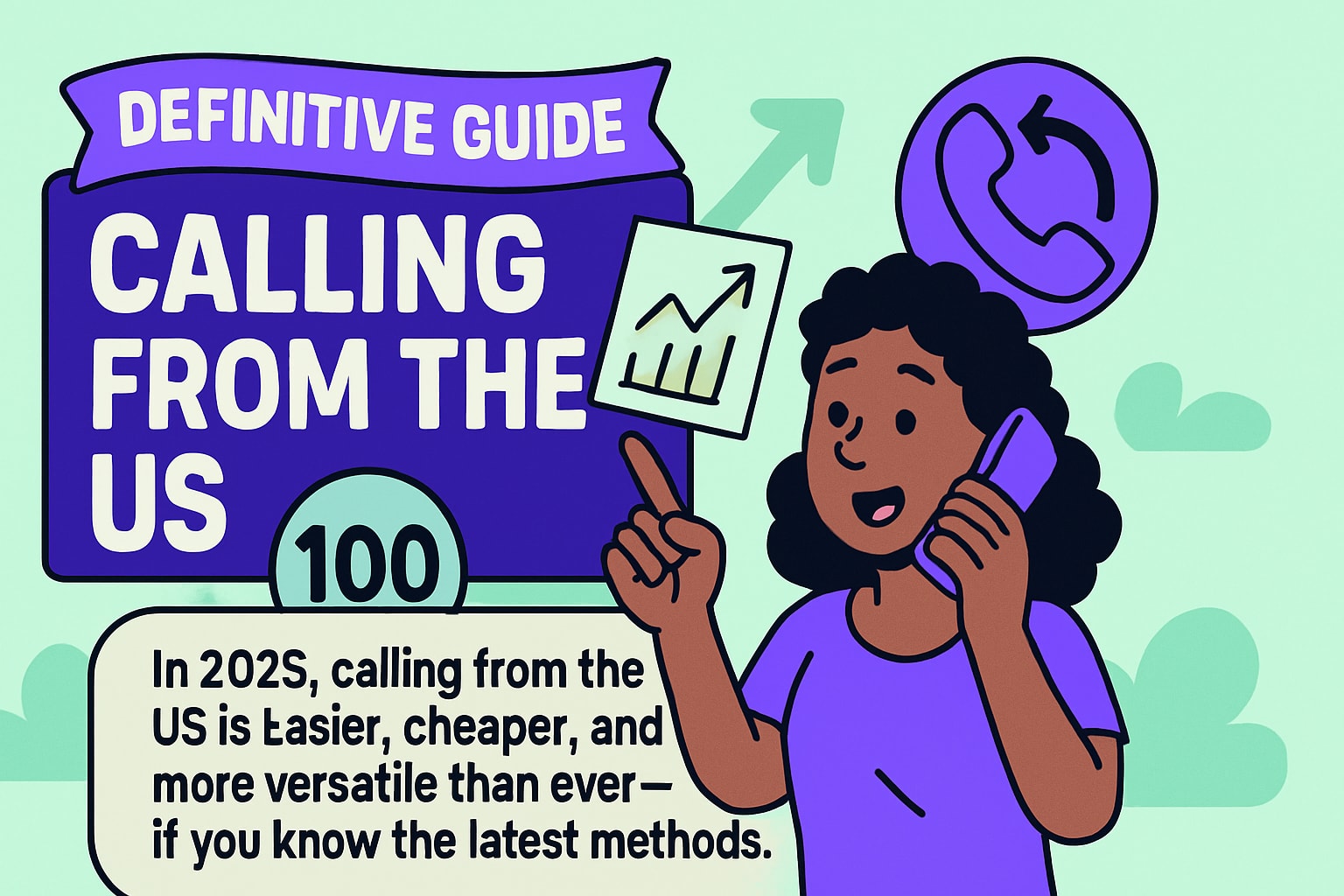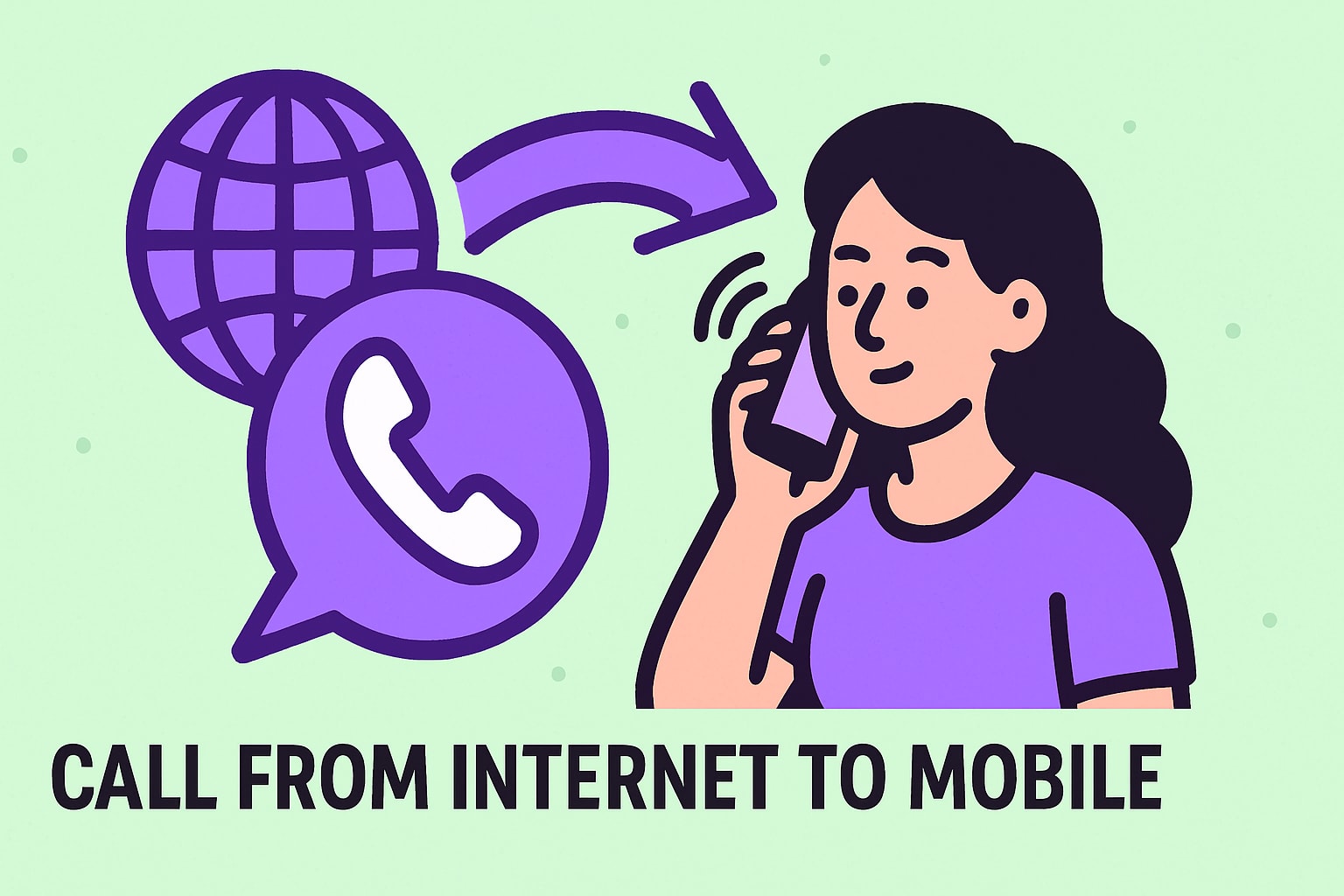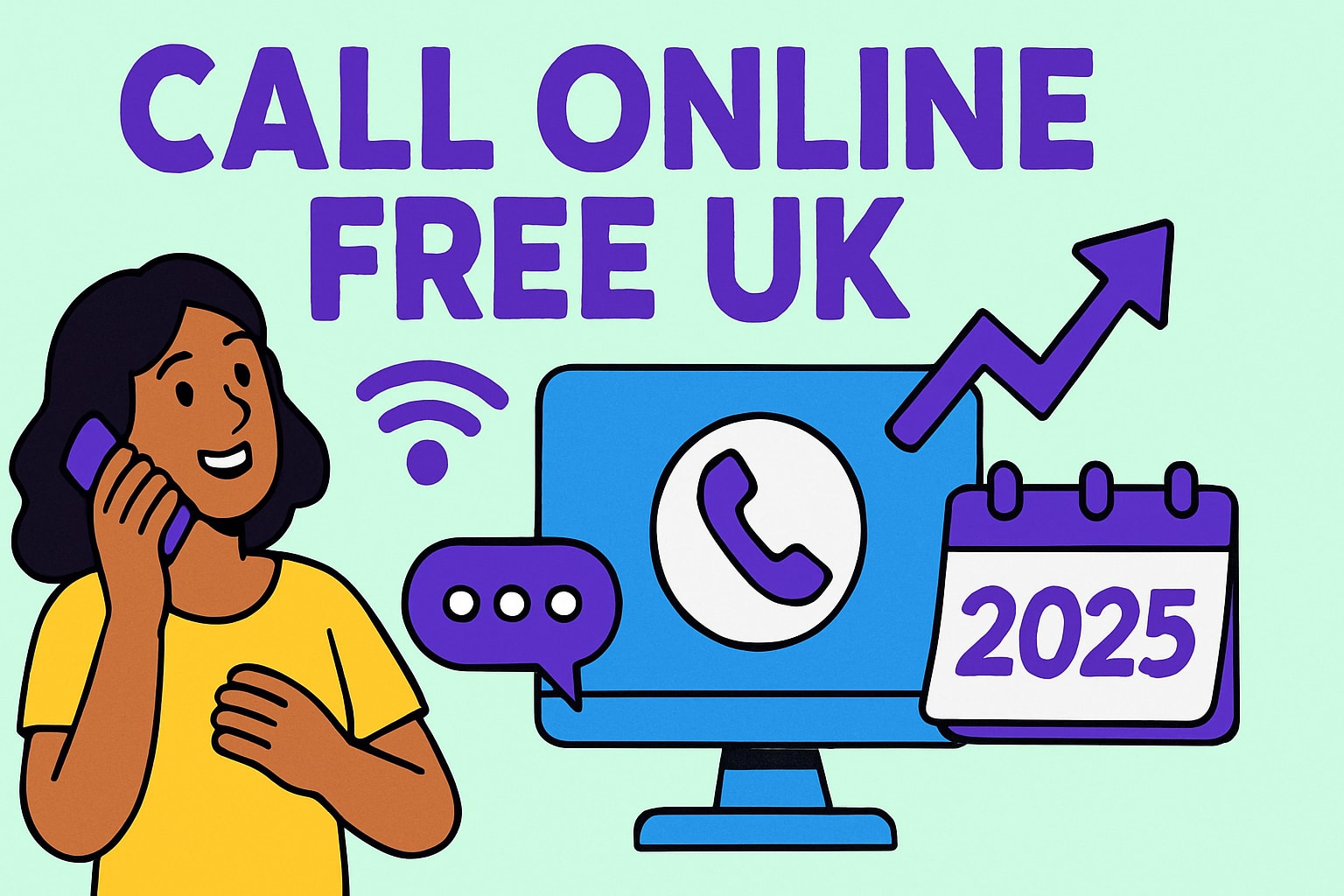In 2025, calling from us is easier, cheaper, and more versatile than ever, provided you know the newest methods. The way we connect—domestically and internationally—has changed rapidly with advances in technology, new regulations, and shifts in user habits.
Mastering these changes lets you save money, enjoy clearer call quality, and simplify every aspect of your communication. Are you ready to make seamless calls from the US without confusion or wasted time?
This definitive guide will walk you through the latest calling technologies, step-by-step processes, cost-saving strategies, legal considerations, troubleshooting advice, and future trends. Let’s get started so you can call with confidence in 2025.
Understanding Calling Technologies in 2025
The landscape of calling from us is rapidly transforming in 2025. New technologies, devices, and regulations are reshaping how we connect, whether for business or personal needs. Let us break down the major changes, from the tools we use to the rules keeping our conversations safe.
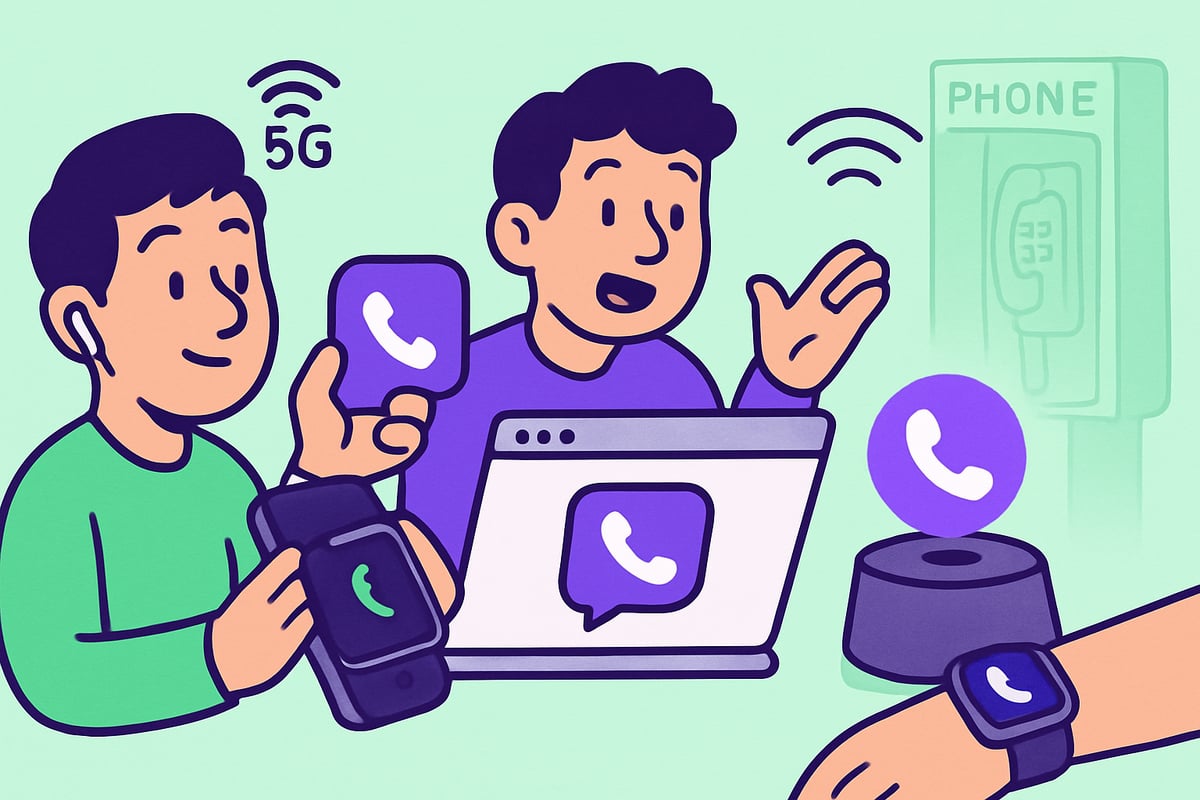
Evolution of Calling Methods
Over the past decade, calling from us has shifted dramatically. Traditional landlines are now rare, replaced by Voice over Internet Protocol (VoIP) and app-based solutions. People prefer browser-based platforms that require no downloads, making calls even more accessible.
The rollout of 5G and advanced Wi-Fi has elevated call quality and reliability. Calls are clearer, with fewer dropped connections. Smart devices play a growing role; watches and home assistants can now initiate and receive calls with ease.
Public payphones, once a staple, are nearly obsolete. The FCC reported in 2024 that 70 percent of US households rely primarily on VoIP or mobile for calling from us. For more details on the latest advances, visit the Latest calling technology trends.
Key Types of Calls from the US
Understanding the different types of calling from us is crucial in 2025. Domestic calls remain common, spanning local and long-distance numbers within the country. International calls are easier than ever, whether through direct dial, VoIP, or specialized apps.
Emergency calling, such as 911, benefits from enhanced location tracking for faster response. Toll-free numbers and premium services are widely used in both personal and business contexts. Each scenario presents unique requirements for calling from us, so knowing the correct approach saves time and ensures compliance.
Call Types Overview
| Call Type | Typical Use | Special Features |
|---|---|---|
| Domestic | Local/Long-distance | Area codes, flat rates |
| International | Overseas | Exit/country codes |
| Emergency (911) | Urgent help | Location services |
| Toll-Free/Premium | Business/Support | No cost or extra fees |
Devices and Platforms Used
The devices supporting calling from us are more diverse than ever. Smartphones lead the way, but tablets, laptops, and desktops offer robust calling features through browsers and dedicated apps.
Browser-based calling is gaining ground, offering convenience without software installation. VoIP handsets and traditional landlines still exist, especially in business settings, but smart home devices are quickly catching up. In 2025, an estimated 60 percent of international calls from the US originate via browsers or mobile apps, reflecting this growing trend.
Choosing the right device for calling from us depends on your needs and preferences, but flexibility and connectivity are now standard.
Security and Privacy Considerations
With the evolution of calling from us, security and privacy are top priorities. Modern systems use strong encryption to protect conversations from interception. However, unencrypted calls and data breaches remain risks, especially on unsecured networks.
To enhance safety, follow recommended privacy practices like updating devices regularly, using secure connections, and enabling two-factor authentication. Regulatory measures such as STIR SHAKEN help prevent robocalls and spoofing, keeping calling from us trustworthy and compliant.
Staying informed and vigilant ensures that your calling experience remains secure, private, and efficient in 2025.
Step-by-Step Guide: How to Call from the US in 2025
Making a call in 2025 is both straightforward and flexible, thanks to the latest advances in technology. This step-by-step guide will walk you through everything you need to know about calling from us, whether you are reaching out domestically or internationally. Follow these steps to ensure every call is clear, cost-effective, and hassle-free.
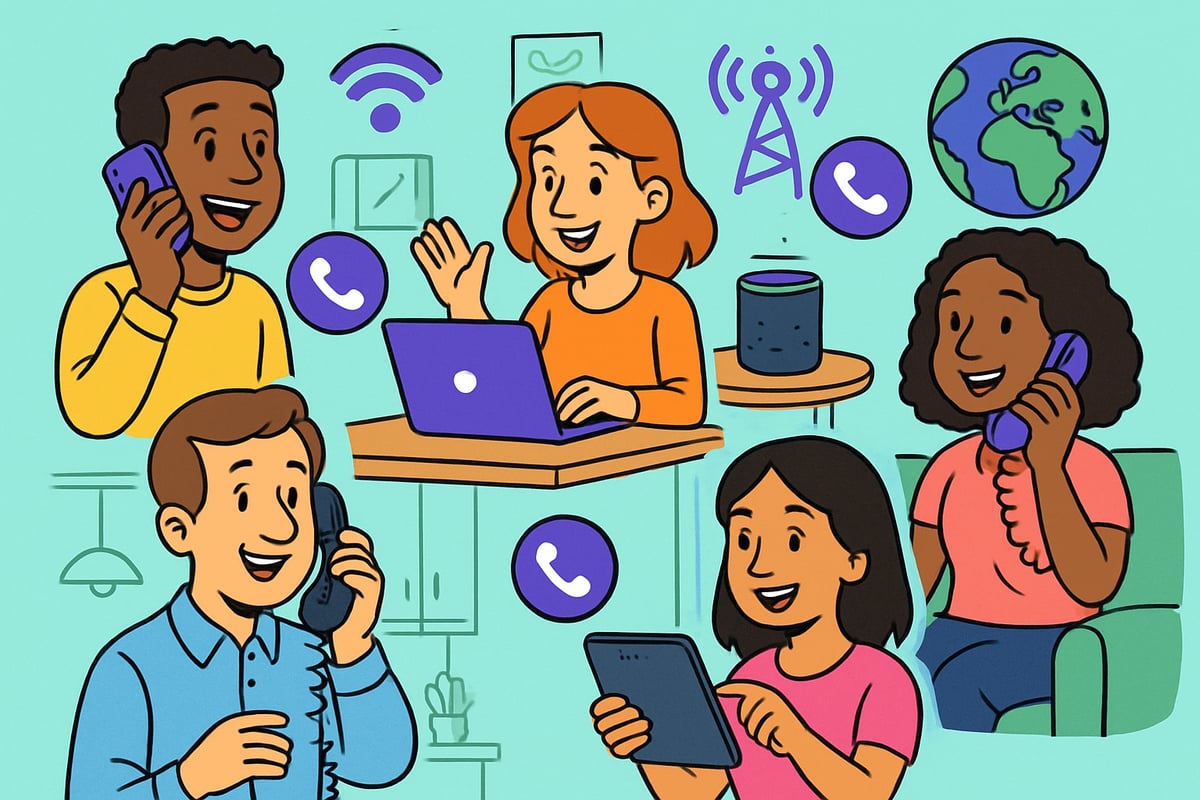
Step 1: Choose Your Calling Method
The first decision in calling from us is selecting the most suitable method. With so many options available, consider your needs, budget, and the type of call. You can choose between traditional landlines, mobile phones, VoIP services, browser-based platforms, or dedicated calling apps.
VoIP and browser-based calls have gained popularity for their affordability and versatility. Many users find that calling from us using VoIP services costs up to 40% less than traditional carriers, especially for international calls. App-based solutions also offer convenient features like video calls and instant messaging.
Evaluate factors such as cost per minute, device compatibility, and internet availability. For those who travel frequently or work remotely, browser-based and app-based calling from us provide flexibility and seamless connectivity. Consider your calling habits and compare features before making a choice.
Step 2: Prepare Your Device
Once you have chosen your method, ensure your device is ready for calling from us. Modern smartphones, tablets, laptops, and desktops all support a range of calling platforms, but device preparation is critical for optimal performance.
First, confirm your device supports the latest connectivity standards, such as 5G and Wi-Fi 6. Update your operating system and calling apps to access the newest features and security enhancements. For mobile devices, determine if you need a physical SIM card or an eSIM, especially if you plan to use different networks.
Check browser compatibility if you are using a web-based service. Some platforms require specific browsers or extensions for calling from us. Ensuring your hardware and software are up to date will minimize disruptions and improve call quality.
Step 3: Dialing Procedures for Different Call Types
Dialing correctly is essential for a successful call. When calling from us, procedures vary depending on whether you are making a domestic, international, or emergency call.
Domestic Calls:
- Dial the 10-digit number (area code + local number).
- For long-distance, include the "1" prefix.
International Calls:
- Dial the US exit code:
011 - Enter the country code
- Input the destination number
Example: 011 + Country Code + Phone Number
Emergency Calls:
- Dial 911 for immediate assistance. Modern systems use enhanced location services for accuracy.
Special Numbers:
- Toll-free (e.g., 800, 888) and premium numbers may have unique rates.
Common mistakes include omitting the exit code or using outdated formats. To avoid errors and check specific requirements for your destination, consult International calling guides for up-to-date information on calling from us to any country.
Step 4: Managing Call Quality and Connectivity
Ensuring high call quality is crucial when calling from us. Start by connecting to a reliable Wi-Fi network or a strong 5G mobile signal. Poor connectivity can lead to dropped calls, echo, or latency.
Optimize your setup by closing unnecessary apps, disabling background data usage, and using a headset for clearer audio. If you encounter issues, restart your device or switch networks. Many modern calling platforms offer built-in call quality monitoring tools, alerting you to problems in real time.
If problems persist when calling from us, consult your service provider’s support resources. Regular device maintenance and network checks will help maintain consistent, high-quality connections.
Step 5: Recordkeeping and Call Management
Effective call management is a key part of calling from us, especially for business or frequent personal use. Most platforms automatically log calls and voicemails, making it easy to track communication.
For those who need to record calls, review privacy regulations in your state before enabling recording features. Many calling apps offer integrated call recording, but compliance with consent laws is essential. Voicemail transcriptions and searchable call logs streamline follow-ups.
Integration with CRM systems or productivity tools enhances recordkeeping when calling from us. By organizing your call data, you can improve responsiveness and maintain a secure communication history.
Cost Factors and How to Save Money on Calls
Staying on top of costs is essential when calling from us, especially as new technologies and plans reshape the market in 2025. Understanding your options can help you make smarter choices, avoid hidden fees, and enjoy clear, reliable calls whether you are connecting domestically or internationally.

Understanding Pricing Models
When it comes to calling from us, understanding the pricing structure is your first step to saving money. Most providers offer a mix of per-minute rates, unlimited plans, and bundled international packages.
Per-minute plans charge you for each minute of talk time. These can be cost-effective for occasional users but may add up quickly for frequent callers. Unlimited plans are popular for those who make regular calls, offering a flat monthly rate with no minute restrictions. Some carriers also provide flat-rate international packages, which bundle a set number of international minutes for a fixed fee.
Pay-as-you-go and prepaid options remain available, allowing users to control spending and avoid contracts. According to recent data, the average per-minute rate for major US carriers in 2025 ranges from $0.05 to $0.15, while unlimited plans can start at $25 per month.
Comparing Providers and Platforms
Choosing the right provider can make a significant difference when calling from us. Traditional telecoms, VoIP services, and browser-based platforms each offer unique pricing and features.
| Provider Type | Avg. Cost/Min | Unlimited Plan | International Access | Support Level |
|---|---|---|---|---|
| Major Telecom | $0.12 | $35/month | Yes | 24/7 |
| VoIP Service | $0.07 | $25/month | Yes | Online |
| Browser-Based | $0.05 | $20/month | Limited |
Features like call forwarding, customer support, and international access can impact the overall cost. For business users, integration with CRM tools may be a deciding factor. Comparing these options ensures you find the best value for your calling from us needs.
Free and Low-Cost Calling Options
There are several ways to keep expenses low when calling from us. Wi-Fi calling, browser-based solutions, and app-to-app calls are increasingly popular, offering free or very low-cost connections.
Many platforms let you call other users on the same app for free, while some browser-based services provide limited free minutes to landlines or mobiles. However, these options often come with restrictions on call duration, advertisements, or regional availability.
Students and travelers often take advantage of these free solutions to stay connected without breaking the bank. Just be aware of potential limitations, such as the need for stable internet or the inability to reach certain numbers.
Tips for Reducing Call Costs
Maximizing savings when calling from us involves a few practical steps. First, use Wi-Fi whenever possible to avoid mobile data charges. Many providers offer discounted rates for Wi-Fi calls, especially for international destinations.
Consider scheduling calls during off-peak hours, as some carriers offer lower rates outside of busy times. Bundling international minutes or using calling cards can further reduce expenses, particularly for frequent overseas calls.
Monitor your usage to avoid overage fees and always review your provider’s latest offers. For an in-depth look at cost-saving strategies, check out this Cheap calls from the US guide.
By staying informed and choosing the right tools, you can make every call count without overspending.
Legal and Regulatory Considerations for Calling from the US
Understanding legal and regulatory requirements is essential for anyone calling from us in 2025. Regulations continue to evolve, impacting how individuals and businesses communicate both domestically and internationally.
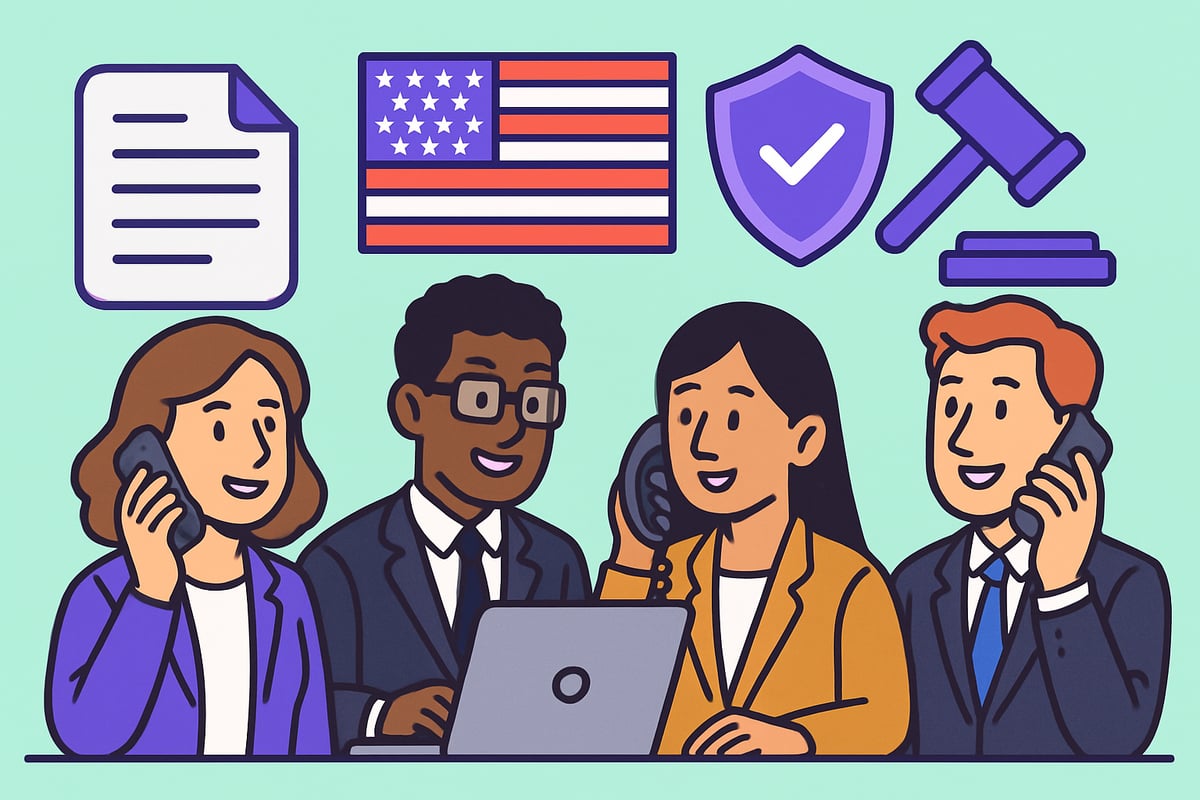
Key US Calling Regulations in 2025
The legal environment for calling from us is shaped by several major FCC rules. In 2025, the STIR/SHAKEN framework is fully implemented, requiring carriers to authenticate caller ID and reduce spoofed robocalls. Emergency calling remains a priority, with all providers required to support accurate 911 location tracking and ensure accessibility for users with disabilities.
Number portability is protected, letting consumers keep their phone numbers when switching carriers. Consumer rights are reinforced through transparency requirements about call charges and privacy. The FCC’s latest anti-spam laws give providers more authority to block unwanted calls. For a detailed breakdown of recent changes, review the FCC's 2025 Call Blocking Rules Explained.
Staying informed about these regulations helps ensure compliance and protects users from penalties while calling from us.
International Calling Compliance
When calling from us to international destinations, compliance with both US and global regulations is critical. Certain numbers and countries may be restricted due to sanctions or fraud risks. Users must also consider data privacy laws such as the GDPR for Europe and CCPA for California, which regulate how call data is stored, processed, and shared.
Violations of international call regulations can result in significant penalties, including fines or blocked access. Businesses handling international calls must maintain robust privacy policies and ensure staff understand the rules. Always check if your provider complies with current international standards before making calls from the US.
Adhering to these regulations reduces legal risk and builds trust with those you are calling from us.
Recording and Monitoring Laws
Recording calls when calling from us involves navigating a complex web of state and federal laws. Some states require the consent of all parties on a call, while others need only one party’s approval. It is essential to verify the consent requirements for both your state and the recipient’s location before recording.
Best practices include always informing participants that the call may be recorded and securely storing any recordings. High-profile legal cases in recent years have highlighted the risks of non-compliance, resulting in heavy fines and reputational damage.
Refer to the table below for a summary of state consent requirements:
| State | Consent Needed |
|---|---|
| California | All parties |
| New York | One party |
| Florida | All parties |
By following legal guidelines and staying up-to-date, you can safely record and monitor calls when calling from us.
Troubleshooting and Optimizing Your Calling Experience
Staying connected in 2025 means being prepared to tackle occasional challenges with calling from us. Whether you are dealing with dropped calls, audio issues, or device glitches, a proactive approach ensures seamless communication. Below, you will find practical solutions, optimization tips, and accessibility features to enhance every call.
Common Calling Issues and Solutions
Even with advanced technology, calling from us can encounter obstacles. Users most often report dropped calls, poor audio, or connection failures. Device compatibility and software updates are common culprits. A 2025 survey found that the top three problems are:
| Issue | Typical Causes | Quick Fixes |
|---|---|---|
| Dropped Calls | Weak signal, network | Move closer to router or tower |
| Poor Audio Quality | Interference, outdated | Restart device, update apps |
| Connection Failures | App or OS errors | Reinstall app, check permissions |
To resolve these, always check your network strength first. Restart your device and confirm that all software is up to date. For persistent robocalls or caller ID issues, refer to the FCC's STIR/SHAKEN Caller ID Authentication Framework for current standards and troubleshooting steps. Keeping your device clear of unnecessary apps also minimizes conflicts that can impact calling from us.
Enhancing Call Quality and Reliability
Improving your experience with calling from us starts with network optimization. Use Wi-Fi or 5G whenever possible, as these networks offer more stable connections and better sound quality. Investing in a noise-cancelling headset can further reduce background noise during important calls.
Regularly update your device firmware and calling apps to access the latest features and bug fixes. Schedule routine maintenance, such as clearing cache and checking for software conflicts, to keep your device running smoothly. Simple steps like these can transform calling from us into a frustration-free experience.
Accessibility and Inclusive Calling Features
In 2025, calling from us is more inclusive than ever. Solutions for users with hearing or speech impairments include real-time text (RTT), captioned calls, and video relay services. These features are widely supported on modern devices and ensure everyone can participate fully.
Businesses and individuals should verify compliance with the Americans with Disabilities Act (ADA) and similar regulations. Look for devices and apps that support accessibility standards, making calling from us user-friendly for all. Staying informed about available features guarantees that every user finds a calling solution tailored to their needs.
Future Trends in US Calling: What to Expect Beyond 2025
The landscape of calling from us is poised for rapid transformation beyond 2025. As technology evolves, both personal and business communications will experience new levels of efficiency, security, and interactivity. Understanding these future trends is essential for anyone looking to stay ahead.
Innovations on the Horizon
In the coming years, innovations will dramatically change how calling from us is experienced. Artificial intelligence is taking center stage, with AI-driven call management tools that screen, route, and even transcribe calls in real time. Voice assistants are becoming more sophisticated, handling scheduling, translation, and privacy controls during calls.
Augmented and virtual reality are emerging as the next big leap. Imagine making a call where you interact with holograms or share immersive virtual spaces, enhancing both business presentations and personal conversations. Satellite-based calling from us is also expanding, promising high-quality connections even in the most remote areas. This is especially vital for rural communities or travelers who need reliable service outside urban coverage zones.
According to industry projections, AI-powered call features are expected to rise by 20% by 2027. As these technologies mature, users will experience smarter, more adaptive calling from us, leading to seamless communication regardless of location or device.
Changing User Behavior and Preferences
The way people approach calling from us is evolving alongside technology. Video and multimedia calls are gaining traction, with more users choosing to communicate face-to-face through their devices. This trend is not limited to social interactions; businesses and educators are embracing video calls as the norm.
Traditional voice-only calls are seeing a decline as users prioritize richer, more interactive experiences. Privacy and security expectations are also growing, with individuals seeking encrypted connections and customizable privacy settings for every call. As awareness of data breaches increases, so does the demand for platforms that put user control and safety first.
Users are also experimenting with new platforms, moving away from legacy telecoms in favor of browser-based and app-centric solutions. These preferences are reshaping the ecosystem of calling from us, making flexibility and user empowerment top priorities.
Impacts on Business and Personal Communication
For businesses, calling from us has become integral to remote work and global collaboration. Teams are leveraging advanced calling features to host virtual meetings, share documents, and manage projects across continents. The evolution of customer service is notable, with AI chatbots and voice assistants streamlining inquiries and support.
Telehealth is another area where calling from us is having a significant impact. Healthcare providers are connecting with patients via secure video and voice calls, improving access and convenience. In a recent survey, 85% of companies reported plans to invest in advanced calling solutions over the next year.
To explore the foundational aspects of making calls from the US and how these trends connect to current best practices, see this Calling from the US overview. As technology continues to advance, both businesses and individuals must stay informed to maximize the benefits and security of calling from us.
Now that you know how calling from the US in 2025 is evolving—with browser-based solutions, cost-saving strategies, and improved accessibility—it’s the perfect time to try out these innovations for yourself. Whether you’re connecting with friends abroad or handling business calls, seamless communication is just a click away. Experience firsthand how easy and efficient it can be to call internationally without downloads or hassles. If you’re ready to put these insights into action and see how much you can save, Make free call now.
